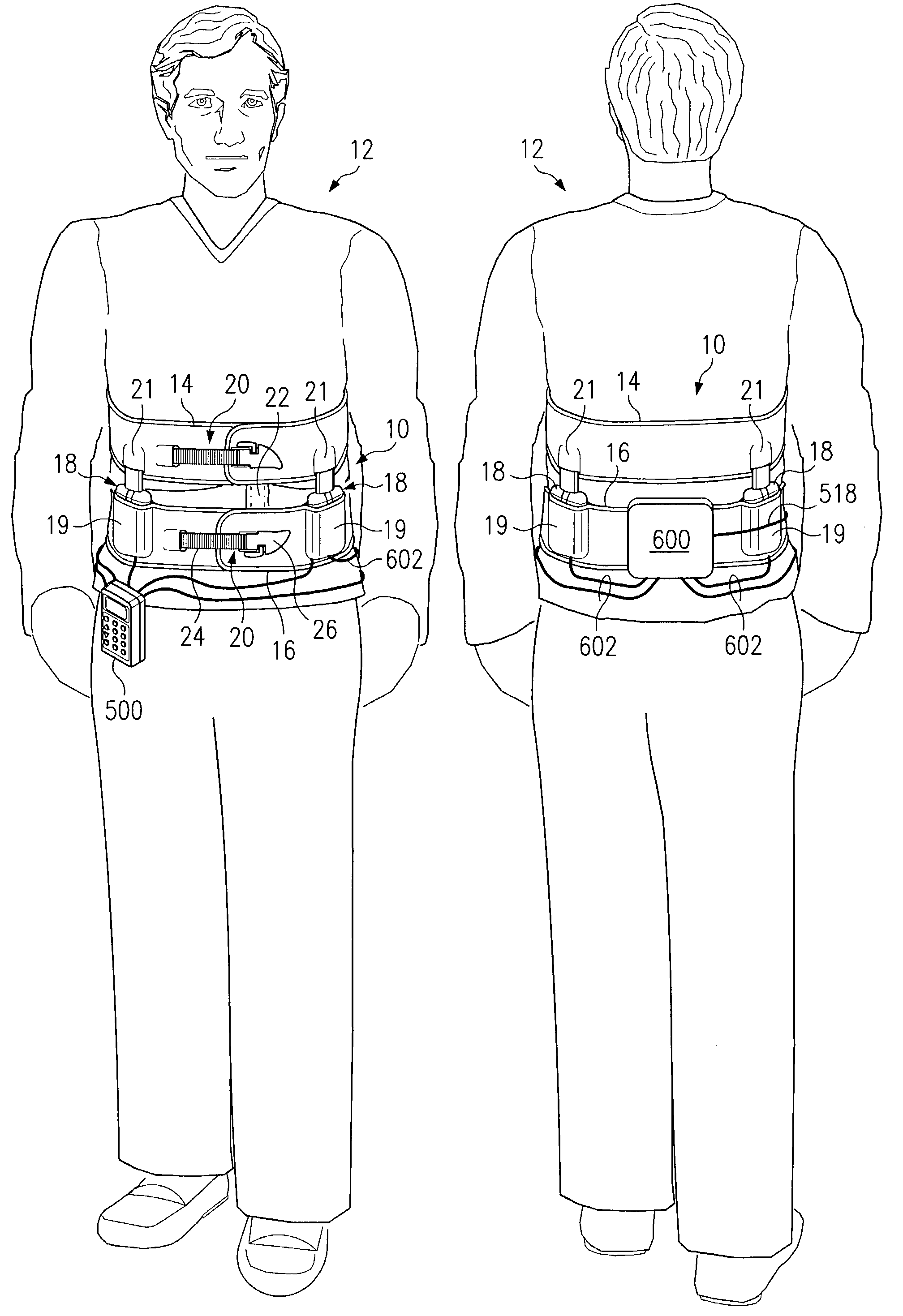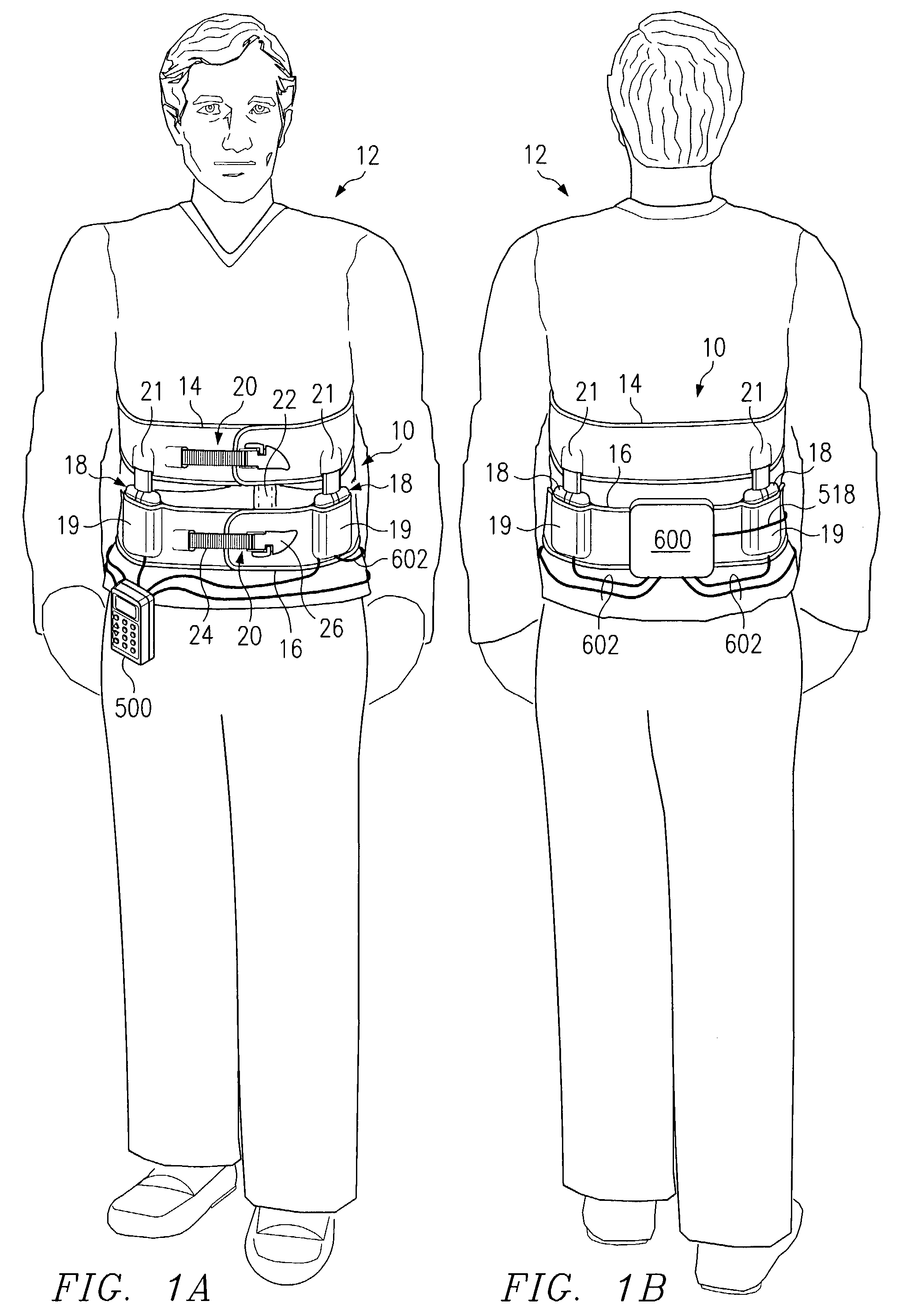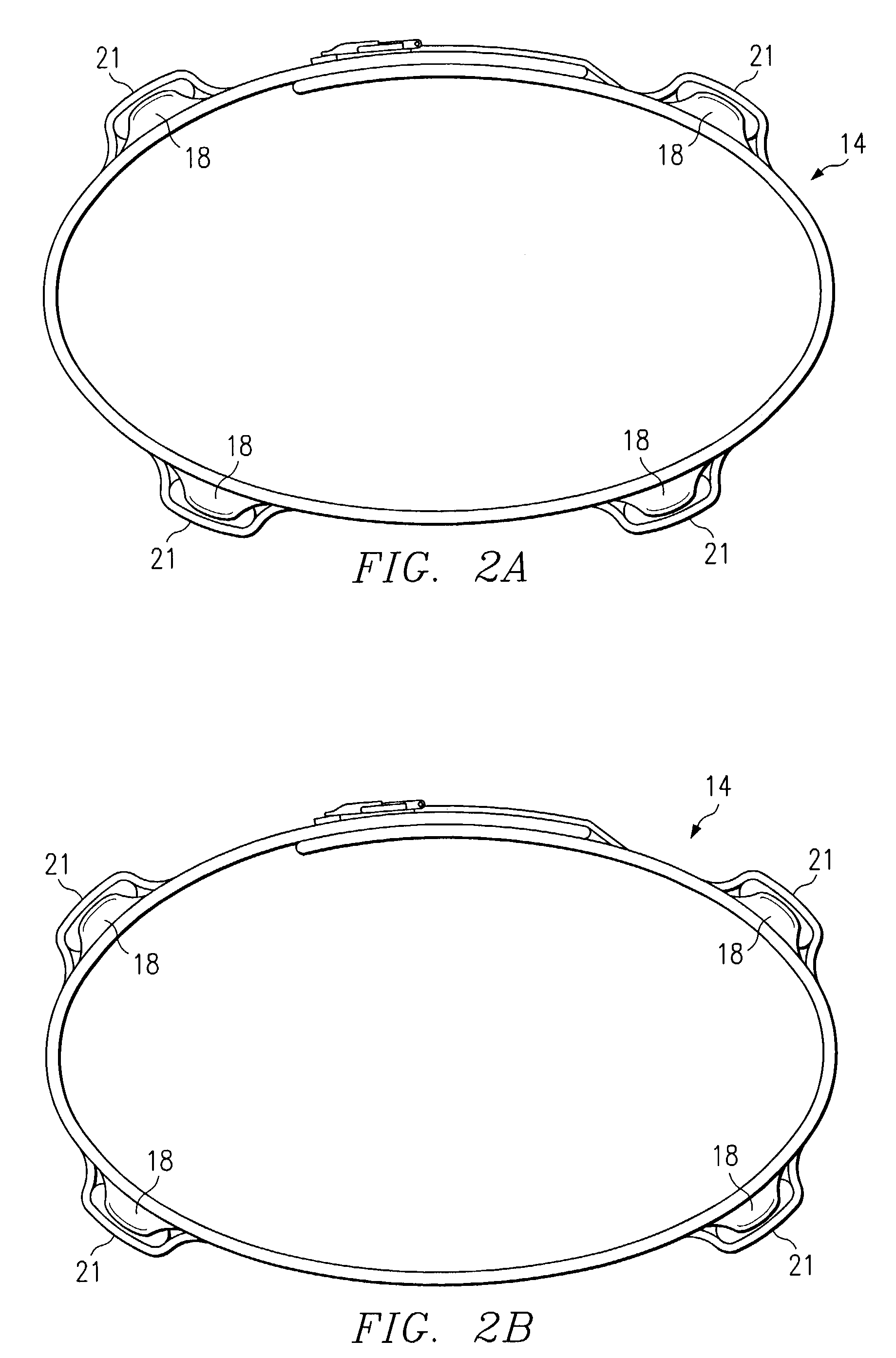Ambulatory cyclic traction device
a cyclic traction and ambulatory technology, applied in the field of medical devices, can solve the problems of user's daily activities being portable and wearable, and achieve the effects of reducing compressive forces, preventing additional compressive forces, and convenient use for users
- Summary
- Abstract
- Description
- Claims
- Application Information
AI Technical Summary
Benefits of technology
Problems solved by technology
Method used
Image
Examples
Embodiment Construction
[0016]FIGS. 1A and 1B illustrate a user 12 wearing an ambulatory cyclic traction device 10 constructed according to one embodiment of the present invention. In the illustrated embodiment, traction device 10 applies decompressive forces to the spine of user 12. In other embodiments, traction device 10 applies decompressive forces to other portions of the user's body, such as the neck, knee, elbow, or other joint. In the illustrated embodiment, the decompressive forces transfer body weight from the spine to the hips of user 12 to reduce compression and aggravation of low back injuries or other conditions. Decompressive forces are created by traction device 10 as described below.
[0017]Traction device 10 includes an upper support belt 14 and a lower support belt 16. Support belts 14, 16 may be formed in any suitable manner that allows them to be positioned around a desired portion of the user's body and to thereafter transfer a decompressive force to that portion of the user's body. Exa...
PUM
 Login to View More
Login to View More Abstract
Description
Claims
Application Information
 Login to View More
Login to View More - R&D
- Intellectual Property
- Life Sciences
- Materials
- Tech Scout
- Unparalleled Data Quality
- Higher Quality Content
- 60% Fewer Hallucinations
Browse by: Latest US Patents, China's latest patents, Technical Efficacy Thesaurus, Application Domain, Technology Topic, Popular Technical Reports.
© 2025 PatSnap. All rights reserved.Legal|Privacy policy|Modern Slavery Act Transparency Statement|Sitemap|About US| Contact US: help@patsnap.com



